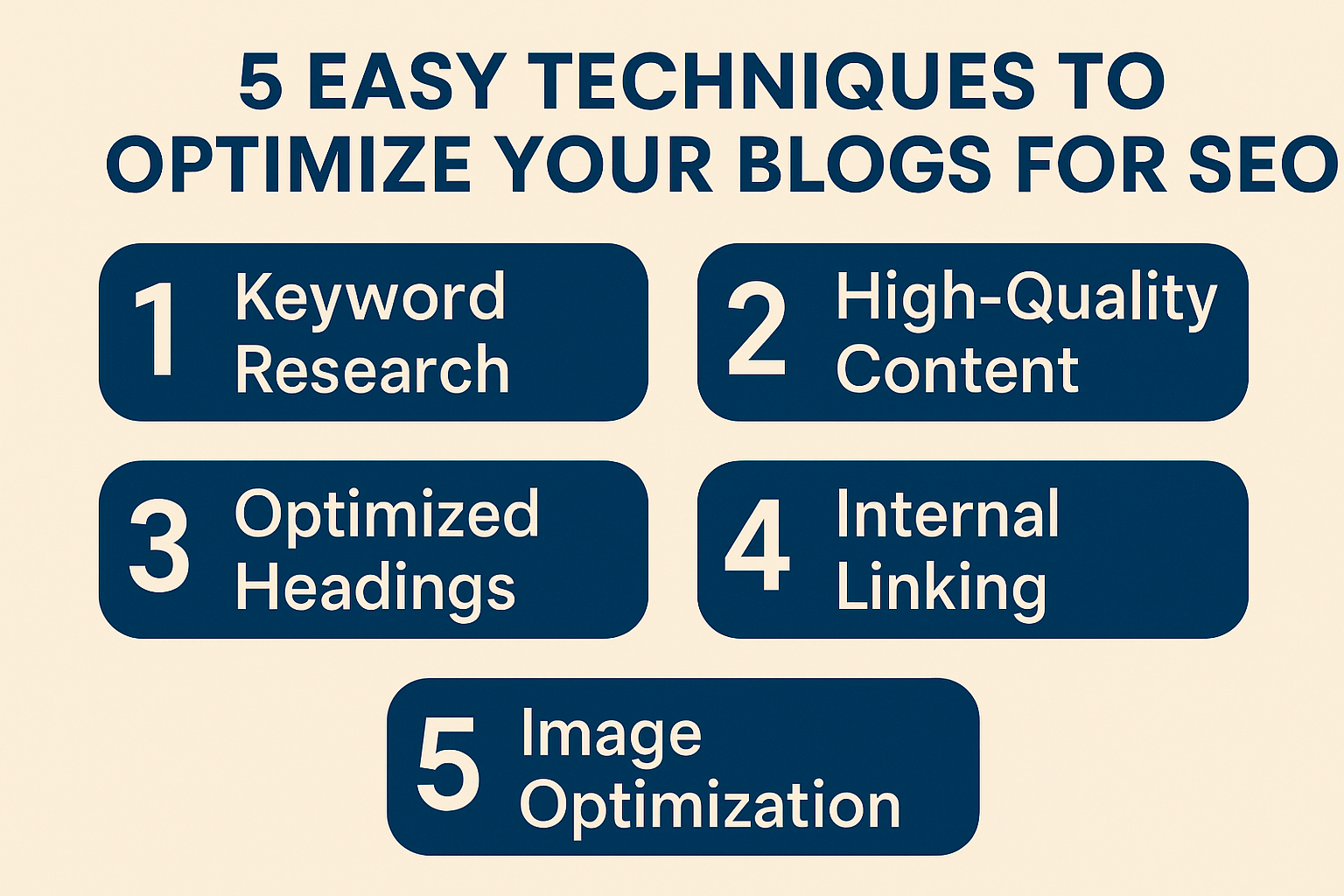Keep Up With Google: How to Adapt Your SEO Strategies to Algorithm Changes
In digital marketing, search engine optimization (SEO) is essential, and it helps your website stand out in search engine rankings and attract more visitors. But as technology advances, so do the standards that Google uses when determining where websites land in their rankings. As a result, businesses must continuously update their SEO strategies to stay ahead of the curve.
Google’s Ranking Algorithms
Google’s algorithms are constantly changing and evolving to better serve its users. Google ranks pages based on hundreds of factors, including page content, backlinks from other websites, and overall user experience. These algorithms are regularly updated to provide searchers with the most accurate information possible. This means that even if your website has been ranking highly for years, it may suddenly drop off if you don’t keep up with algorithm changes.
Google’s Ranking Algorithms
1. Google’s ranking algorithms are constantly changing.
Google is constantly pushing the boundaries with its algorithms for ranking websites, which are continually evolving due to various factors such as user behavior, technological advancements, and more. Every change that Google makes has an overall impact on website rankings and organic search performance in its search engine result pages (SERPs). For example, recent changes, such as BERT and the medic core update, have allowed them to consider contextual understanding while assessing a website’s relevance. As a result, it is crucial for any business or website seeking to rank in modern times to closely monitor these updates, ensuring they stay informed about any changes that may impact how their site is indexed.
2. The essential factors in Google’s ranking algorithms are links and content.
Google’s ranking algorithms play a crucial role in determining where a website appears in search engine results. Links and content remain critical elements of all the factors that go into rankings. While there is much debate over which has a more significant influence on orders, both play vital roles in shaping them. As noted by many experts, building a high-quality content portfolio with targeted keywords and valuable information is crucial for enhancing organic search visibility. Supplementing this effort with genuine links from authoritative websites can further positively impact a website’s performance in Google search queries. Unsurprisingly, these two elements have consistently held sway throughout Google’s ever-evolving algorithms.
3. Links are still the most critical factor in Google’s ranking algorithms.
Links have long been among the most influential determinants in Google’s ranking algorithms and remain so today. When search engines calculate website quality scores, having links from respected and popular sources is a primary factor. The relevancy and authority of those links are what matter, not the quantity. Inbound links indicate to Google that other websites find your content relevant, so quality sites that link to yours can give you an advantage over competitors regarding rankings. Utilizing link-building tactics such as guest blog post writing and broken link building can help boost your website’s orders without investing in costly SEO efforts.
4. Content is also a significant factor in Google’s ranking algorithms.
Google’s search engine algorithms use content to give users the best query results. Factors such as relevancy, accuracy, and freshness are all evaluated to ensure that the most valuable content is displayed prominently in search results. Content helps deliver answers quickly and accurately, providing a meaningful user experience. Google typically prefers longer, more in-depth content, which offers better value for searchers. The quality of the content is equally crucial since outdated information or incorrect facts can lead to an unsatisfactory experience for users. Content should always strive to provide helpful and reliable information to help people make informed decisions about their searches.
5. Social signals are also essential factors in Google’s ranking algorithms.
Google’s position as the world’s foremost search engine doesn’t just come from its technical superiority. Social signals, such as likes or shares on social media platforms, are also essential factors that factor into the elusive ranking algorithms used by Google to determine the order of web pages in search results. By assessing signals such as content popularity and user engagement levels, Google can refine its understanding of content relevance and quality, thereby determining how high it should rank among other search options. Although often overlooked, it is clear that these social signals are an integral part of how we find the information we desire online, making social media’s impact far-reaching.
6. Google’s algorithm updates are designed to improve the quality of search results.
Google constantly strives to improve the quality of search results for its users. To this end, the company regularly updates its algorithm to provide a better experience for those searching the web. This means that content must meet higher levels of accuracy and relevance to avoid being buried in lower rankings. The updates also ensure that Google’s search results are up-to-date with changes on websites or other online sources. With each update, web admins, entrepreneurs, and everyday web surfers benefit from having access to accurate, timely information when using Google’s search bar.
7. The Panda update was designed to reduce the rankings of low-quality websites.
The Panda update, rereleased by Google in the spring of 2011, was designed to reduce the ranking of low-quality websites in search engine results. By better indexing websites that publish high-quality and valuable content, the Panda update aimed to improve the user experience while online. This has yielded excellent results over the years, with many web administrators reporting that overall ranking and traffic levels have improved since its implementation. Unfortunately, some legitimate businesses suffered due to their website’s lower quality content being pushed down by the update; however, this can be easily remedied by improving website content through regular blog updates and thorough proofreading for accuracy. The Panda update ensures users have access to websites with relevant and valuable information.
8. The Penguin update was designed to reduce the rankings of websites using spammy link-building tactics.
The Penguin update, released by Google in 2011, penalizes those who employ link-building tactics. These techniques, such as purchasing links or engaging in link exchanges with low-quality websites, were seen as a way to manipulate search engine results and ultimately improve visibility for a website of lower quality. As part of this algorithm update, Google looked more closely at the quality of incoming links from other sources and reduced the rankings for sites with a high percentage of these links. This ensured that websites found in search engine results would offer visitors access to higher-quality content than was previously available. Overall, the Penguin update has helped create a better experience for those searching through Google’s database.
9. The Hummingbird update was designed to improve the quality of search results by focusing on the meaning of queries rather than individual keywords.
The Hummingbird update to Google’s algorithm was a monumental shift in search engine optimization. It changed the game by emphasizing relevance over keyword stuffing, and Google sought to understand the intent behind user queries rather than simply matching words with content. This update has allowed for a more fluid browsing experience, where higher-quality content is rewarded, and websites can rank better if their material on a specific topic is genuinely authoritative. Ultimately, the Hummingbird update made searches more meaningful and valuable.
10. The Pigeon update was designed to improve local search results by better understanding the intent of queries and the searcher’s location.
The arrival of the Pigeon update marked a significant step by Google to address inconsistencies in local search results across different regions. This update utilizes more advanced algorithms to accurately measure the intent of each query and the user’s physical location, resulting in more tailored and relevant content being delivered in local search results. Additionally, this update ensures a more reliable quantitative measurement of each business’s relevance and prominence on a regional level. Such localized changes enhance the search experience for everyone and help maintain Google’s dominance in delivering high-quality search results.
11. The Mobile-Friendly update was designed to improve the rankings of websites optimized for mobile devices.
Google rolled out the “Mobile-Friendly update” to incentivize website owners and developers to design their websites for use with mobile devices. With this offering from Google, website owners can gain higher rankings on search engine results pages (SERPs) if their sites are optimized for mobile browsing. This change has led to an increase in business websites improving their mobile optimization efforts and paved the way for a more enjoyable, user-friendly experience. For businesses, this change provides an added incentive to invest in mobile optimization, ensuring customers have a pleasant browsing experience regardless of their device.
12. The RankBrain update was designed to improve the quality of search results by using artificial intelligence to understand queries and web pages better
The introduction of RankBrain to Google’s search algorithm in 2015 marked a significant milestone in search engine optimization. This algorithm update was designed to understand user queries and web pages better using artificial intelligence, rather than relying on simple keywords, thereby improving the relevance of search results. As a result, Google searches are more accurate and immediately relevant than ever, encouraging users to explore further and enhancing their online experience. Specifically, RankBrain provides users with frequently updated information on topics related to trending news or other time-sensitive events, ensuring they can access the most up-to-date information. The RankBrain update was an innovative step forward in improving the quality of search results.

Adapting Your SEO Strategies
The key to successfully adapting your SEO strategies for Google’s algorithm updates lies in staying informed about what changes have taken place and how they may affect your website’s ranking position. A great way to do this is by following industry blogs and keeping an eye on Google’s official webmaster blog—this will give you insight into what new algorithms have been released and what steps you need to take to stay ahead of the game. Additionally, plenty of third-party tools can help you monitor your website’s performance over time and alert you when something changes, so make sure you take advantage of those resources too!
When it comes time for you to update your SEO strategies for algorithm changes, there are several things you should consider doing first: updating page titles and meta tags; optimizing images; focusing on user experience; creating fresh content; building backlinks; improving page speed; making sure all redirects are functioning correctly; adding structured data markup; and increasing mobile compatibility. All these elements are essential in how well your website ranks on Google’s SERPs (Search Engine Results Pages).
Adapting Your SEO Strategies
1. Understand How Google Works
Understanding how Google works is a crucial first step in adapting your SEO strategy. Google is the most popular search engine in the world, and it uses various algorithms to determine which websites should rank for each query. While Google doesn’t release the specifics of its algorithms, a few key factors are known to be necessary, including relevance, authority, and freshness.
2. Keep Your Content Relevant
One way to adapt your SEO strategy is to ensure your content is relevant to your target audience. This means creating content that covers the topics that your audience is searching for. It’s also essential to use the right keywords throughout your content so that Google can easily understand what your website is about.
3. Build Your Authority
Another factor that Google considers when ranking websites is authority. Authority is essentially a measure of how trustworthy and credible a website is. One way to build authority is to create high-quality content that other websites will want to link to. You can also build authority by engaging in relevant online communities and forums.
4. Make Sure Your Website Is Fresh
Google also favors websites that are regularly updated with fresh content. This means you should aim to add new blog posts or articles regularly. You can also keep your website fresh by periodically updating your product pages and adding new images and videos.
5. Promote Your Content
Once you’ve created high-quality, relevant content, it’s essential to promote it so that people can find it. There are several effective ways to promote your content, including social media, email marketing, and paid advertising.
6. Monitor Your Rankings
It’s also essential to monitor your website’s search engine rankings regularly to ensure your SEO efforts are paying off. You can use a tool like Google Search Console or Moz’s Rank Tracker to track your website’s progress over time
Search engines like Google are constantly updating their algorithms to serve their users better, and as a result, businesses must continually adjust their SEO strategies accordingly. Staying informed about algorithm updates is crucial for adapting quickly and efficiently, ensuring your website ranks highly in search engine results pages (SERPs). By taking the time to update page titles and meta tags, optimize images, focus on user experience, create fresh content, build backlinks, improve page speed, check redirects, add structured data markup, increase mobile compatibility—and more—you can ensure that your website stays competitive amidst ever-changing algorithmic landscapes.












